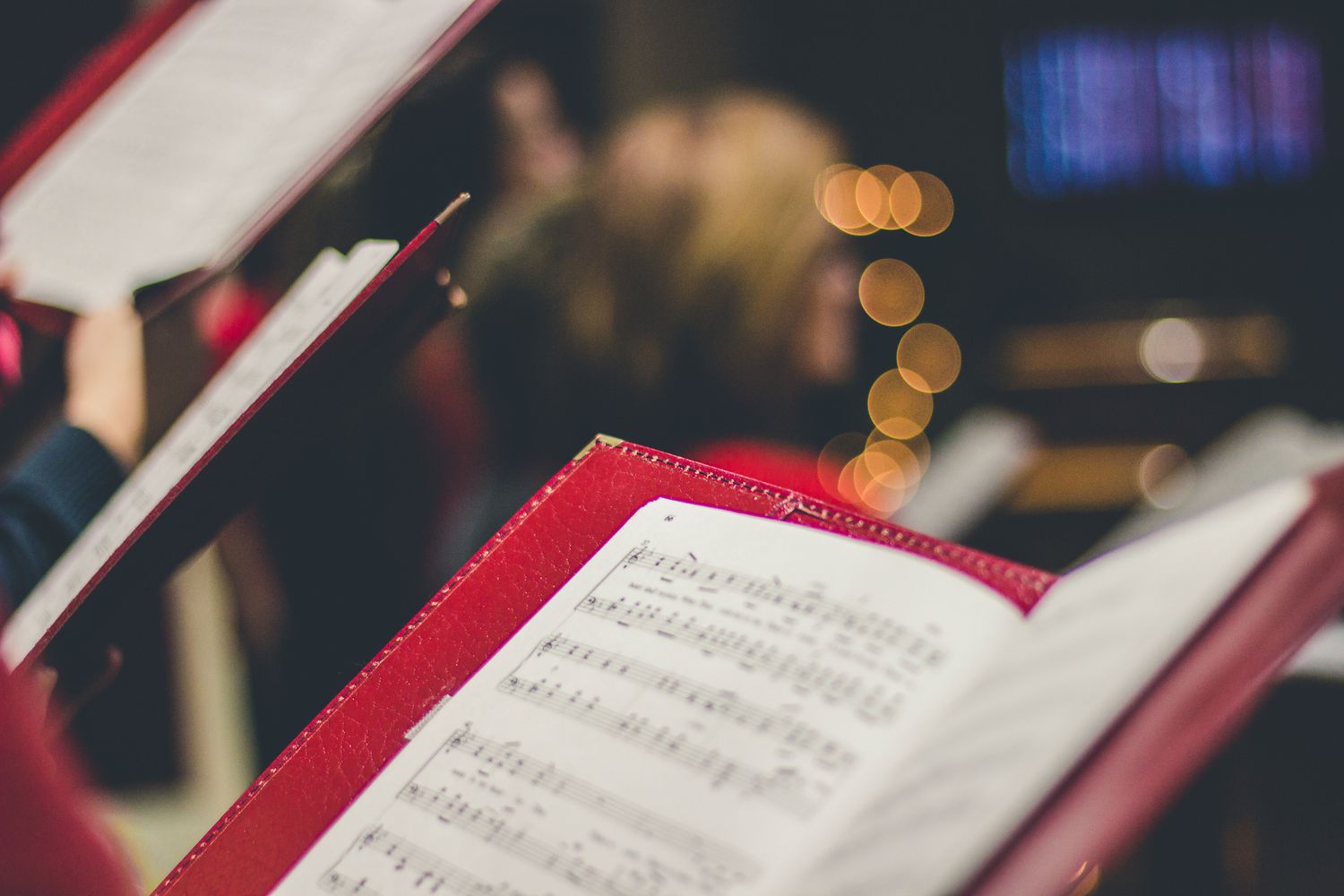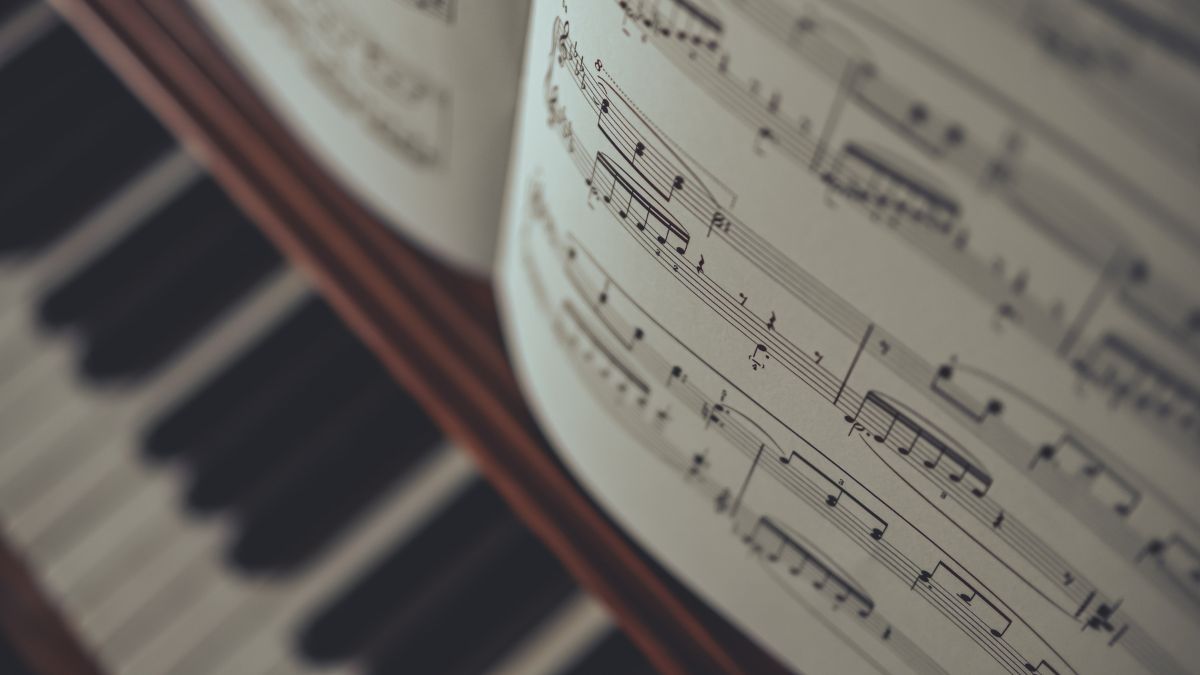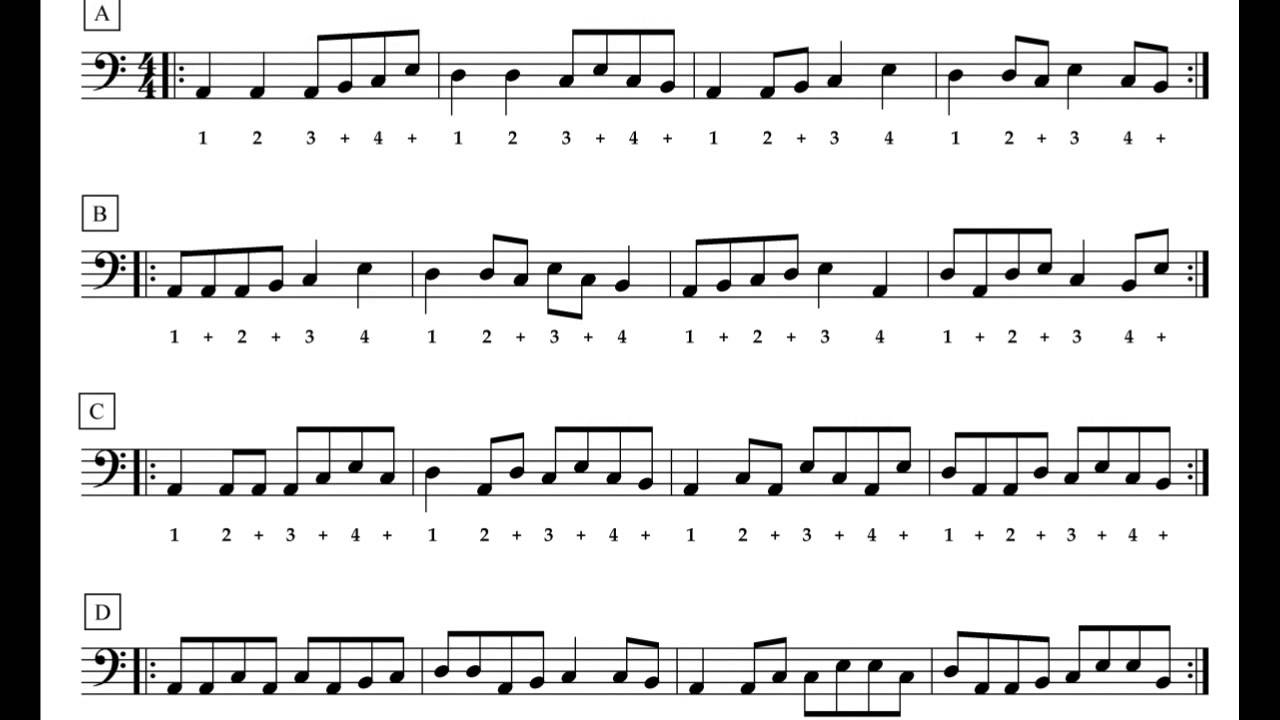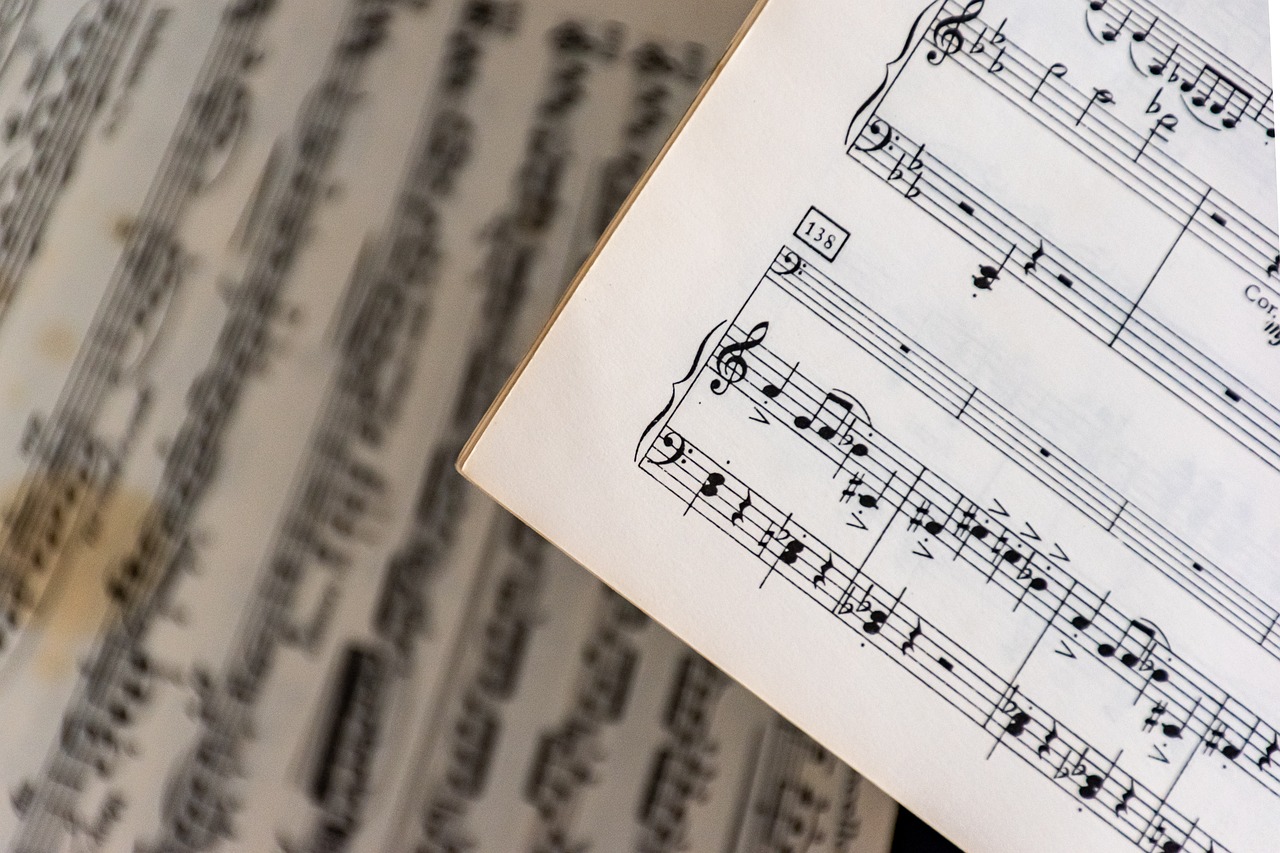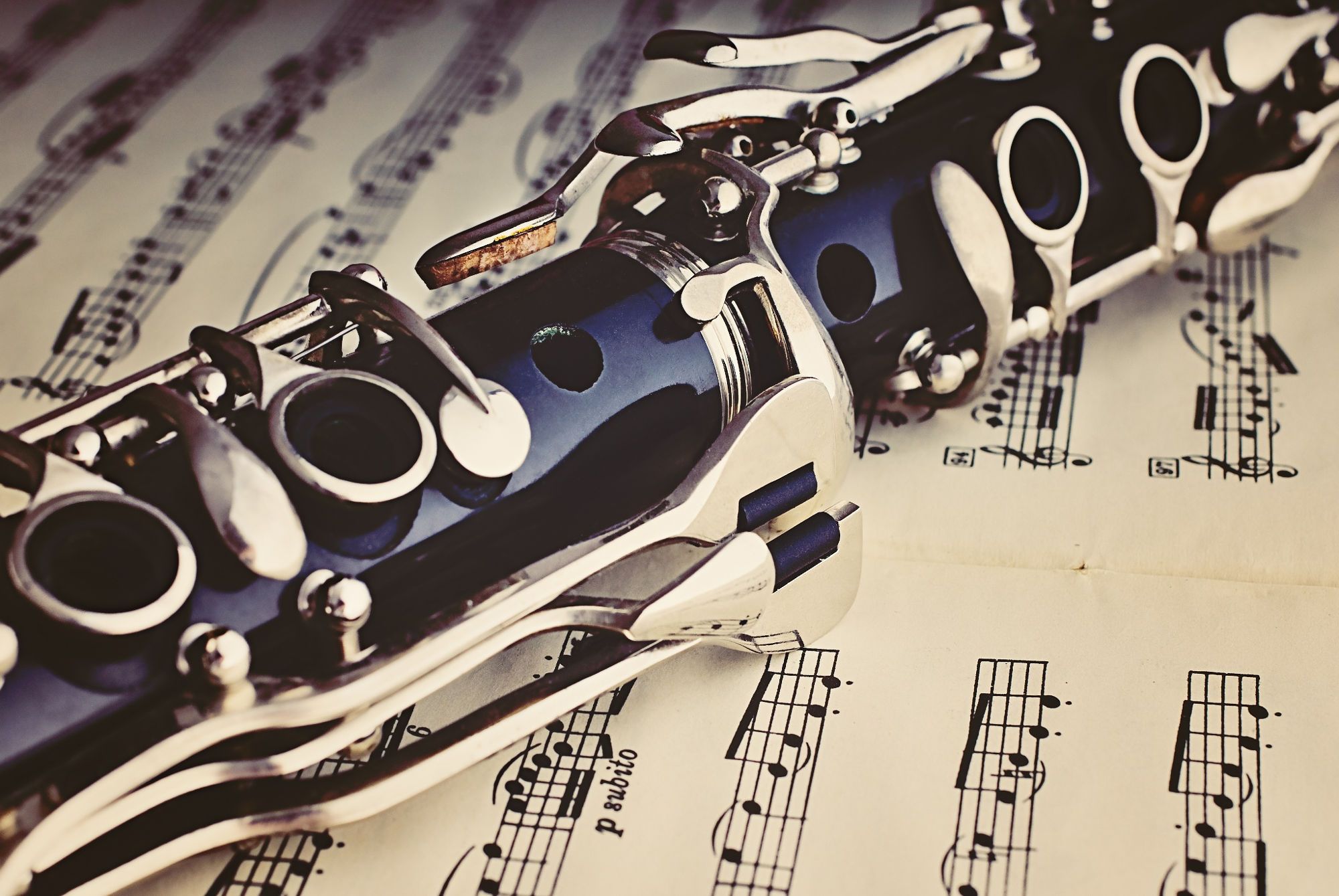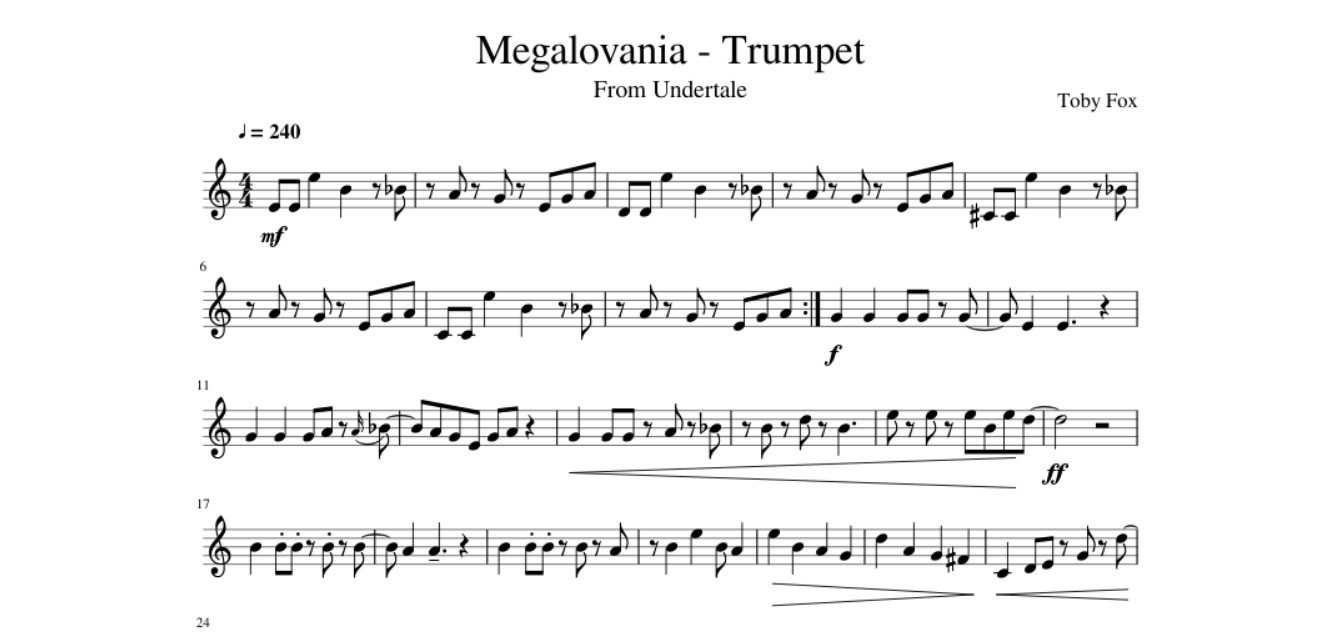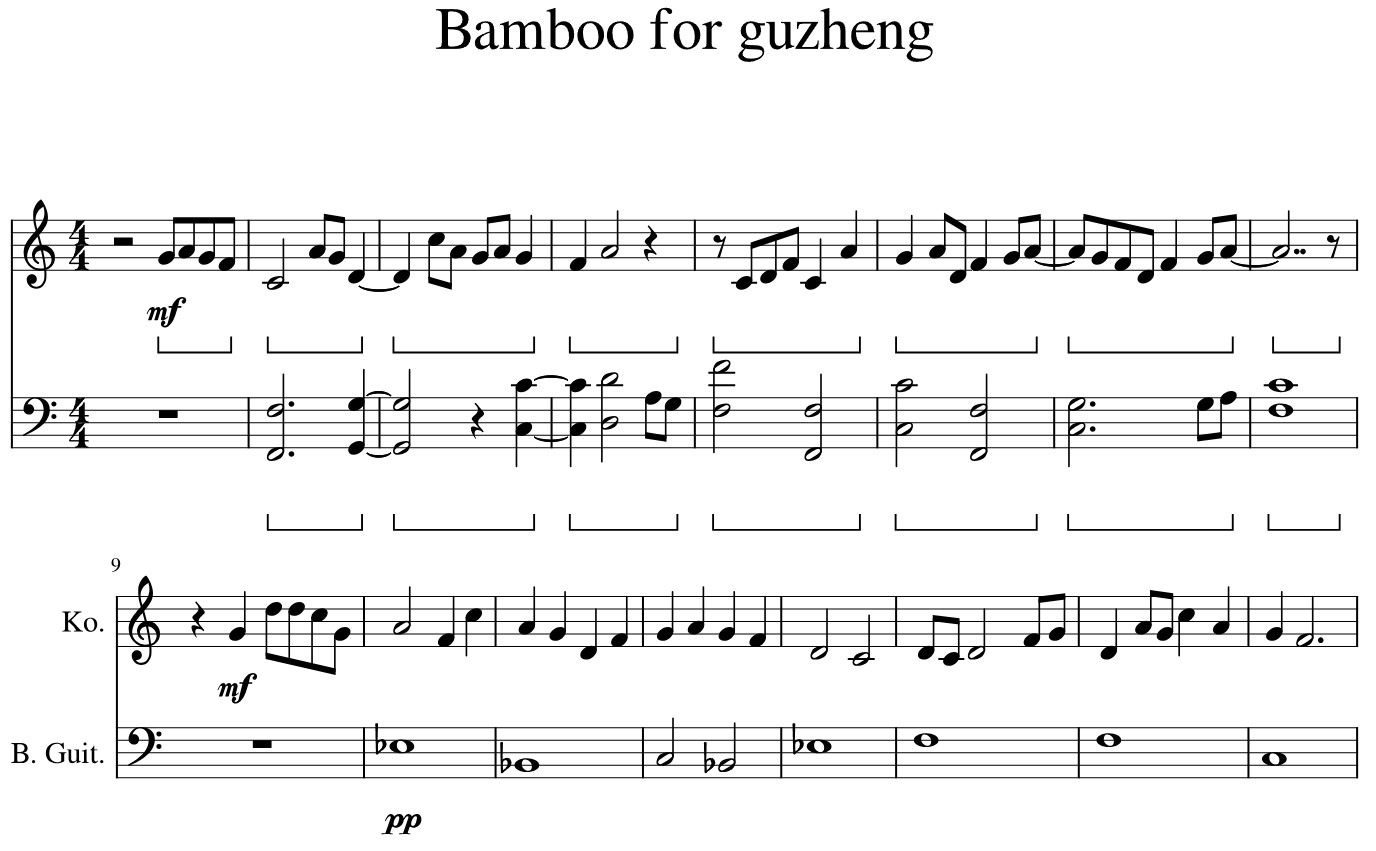Home>Production & Technology>Sheet Music>Learn How To Read Sheet Music


Sheet Music
Learn How To Read Sheet Music
Modified: January 22, 2024
Learn how to read sheet music with our comprehensive guide. Whether you're a beginner or a pro, mastering sheet music will take your musical skills to the next level.
(Many of the links in this article redirect to a specific reviewed product. Your purchase of these products through affiliate links helps to generate commission for AudioLover.com, at no extra cost. Learn more)
Table of Contents
Introduction
Sheet music is a cornerstone of the musical world. It’s the written language that musicians use to communicate and perform music. Whether you’re an aspiring musician or a seasoned professional, learning how to read sheet music is a valuable skill that can open up a world of musical possibilities.
In this article, we will take a comprehensive look at sheet music, breaking down its various components and teaching you the fundamentals of reading and interpreting musical notation. By the end, you’ll have a solid foundation to read sheet music and explore the vast repertoire of musical compositions.
Reading sheet music allows you to play a wide range of instruments, from the piano and guitar to the violin and trumpet. It also enables you to understand and appreciate the intricacies of musical compositions, as well as convey your own musical ideas to others.
While sheet music can appear complex and intimidating at first glance, it’s important to remember that it is simply a representation of the sounds and rhythms of music. With practice and patience, you can develop the ability to effortlessly decipher sheet music and bring it to life through your own performance.
Throughout this article, we will cover a variety of topics related to sheet music, including understanding the staff, clefs and key signatures, note names and durations, time signatures, reading musical notation, learning music symbols and expressions, techniques for sight reading, and practice exercises. By exploring these topics, you’ll gain a holistic understanding of sheet music and be well-equipped to dive into the world of musical notation.
So, grab your instrument and get ready to embark on an exciting journey into the realm of sheet music. Let’s dive in and unravel the mysteries of musical notation together!
Understanding the Staff
The staff is the foundation of sheet music and provides a framework for notating musical pitches and rhythms. It consists of five horizontal lines and four spaces, spanning from bottom to top. Each line and space on the staff represents a different pitch, allowing musicians to visualize and interpret the music being played.
The staff is divided into measures, which are separated by vertical lines called bar lines. These bar lines help organize the music into smaller sections and indicate where each measure begins and ends.
To aid in reading and identifying pitches, the staff utilizes clefs. The two most common clefs are the treble clef and the bass clef. The treble clef is typically used for instruments like the piano, violin, and flute, while the bass clef is common for instruments like the bass guitar, cello, and tuba.
Each line and space on the staff is assigned a letter name to represent a specific pitch. The treble clef identifies the pitch G on its second line and serves as a reference point for the other notes. The lines and spaces above and below the staff extend the range of pitches that can be notated.
Understanding the staff also involves learning about key signatures, which are indicated by sharps (#) or flats (b) placed at the beginning of each staff. Key signatures define the tonal center and determine the scale and notes that will be used throughout the piece of music. By recognizing the key signature, musicians can anticipate which notes may be altered or modified throughout the music.
Rhythm is also conveyed through the position of notes on the staff. Each note value has a designated shape, such as whole notes, half notes, quarter notes, and eighth notes. These shapes indicate the duration of each note and how long it should be held or played.
Knowing how to read the staff is crucial for accurately interpreting and performing sheet music. It serves as the visual representation of the musical ideas and allows musicians to bring the composer’s intentions to life. With practice and continued exposure to sheet music, you will become more proficient in reading and understanding the staff, making your musical journey even more enjoyable.
Clefs and Key Signatures
Clefs and key signatures are essential elements in sheet music that provide important information about the pitch and key of a musical composition. Understanding these symbols is crucial for accurately interpreting and performing the music written on the staff.
A clef is a symbol at the beginning of a staff that indicates the range and pitch of the notes. The two most common clefs are the treble clef (also known as the G clef) and the bass clef (also known as the F clef).
The treble clef is typically used for instruments with higher pitch ranges, such as the piano, violin, and flute. It represents the pitch G on the second line of the staff, and the other pitches are interpreted relative to this reference point.
The bass clef, on the other hand, is commonly used for lower-pitched instruments like the bass guitar, cello, and tuba. It represents the pitch F on the fourth line of the staff. The pitches below and above this line are determined by their proximity to the F reference point.
In addition to the treble and bass clefs, there are other clefs used in specialized contexts. For example, the alto clef is often used for viola music, and the tenor clef is used for some lower-range instruments like the trombone.
Key signatures, marked by sharps (#) or flats (b) at the beginning of each staff, indicate the key or tonal center of a piece of music. They provide information about which notes are altered or modified throughout the composition.
A key signature can have multiple sharp or flat symbols, and their placement on the staff follows a specific pattern. For example, if a piece is in the key of G major, there will be an F# symbol in the key signature. This means that every F note in the piece is played as F#, unless otherwise indicated.
Likewise, if a piece is in the key of C major, which has no sharps or flats, the key signature will be empty. This indicates that all the natural notes (A, B, C, D, E, F, G) are played as they appear on the staff with no alteration.
Understanding clefs and key signatures is crucial for correctly interpreting sheet music. It allows musicians to anticipate which notes will appear throughout the composition and play them in the appropriate pitch and key. With practice and exposure to a variety of musical pieces, you’ll become more comfortable and confident in reading and interpreting different clefs and key signatures.
Note Names and Durations
When reading sheet music, understanding note names and durations is essential. Each symbol on the staff represents a specific musical note, and the duration of the note determines how long it should be held or played.
Note names are represented by letters of the alphabet, ranging from A to G. These letter names are assigned to the lines and spaces of the staff, allowing musicians to identify the pitch of each note.
In the treble clef, the notes on the lines of the staff, from bottom to top, are E, G, B, D, and F. The spaces, from bottom to top, spell the word FACE. This helps musicians quickly and easily identify the notes within the treble clef. In the bass clef, the notes on the lines of the staff, from bottom to top, are G, B, D, F, and A. The spaces, from bottom to top, spell the word ACEG.
Notes can also be altered or modified by accidentals, which are symbols placed in front of the notes. The most common accidentals are sharps (#), flats (b), and naturals (♮). Sharps raise the pitch of a note by a half step, flats lower the pitch by a half step, and naturals cancel out any previous accidental and return the note to its natural pitch.
Durations of notes are represented by various shapes on the staff. Whole notes (♩) represent the longest duration, usually held for four beats. Half notes (♪) are held for two beats, quarter notes (♫) for one beat, and eighth notes (♪♪) for half a beat. These shapes provide a visual representation of the note duration and help musicians understand the rhythm and timing of the music.
In addition to these basic note shapes, there are other symbols that represent different durations, such as sixteenth notes (♬) and dotted notes. A dot placed after a note increases its duration by half. For example, a dotted half note (♩.) is held for three beats, while a dotted quarter note (♫.) is held for one and a half beats.
Understanding note names and durations is crucial for accurately interpreting and performing sheet music. By recognizing the pitch and duration of each note on the staff, musicians can reproduce the music as intended by the composer. With practice and exposure to different musical pieces, reading note names and durations will become second nature, allowing you to bring the music to life through your performance.
Time Signatures
Time signatures are a crucial component of sheet music that provide valuable information about the rhythm and meter of a musical composition. They consist of two numbers written at the beginning of each staff, typically placed right after the clef and key signature.
The top number of a time signature indicates the number of beats in each measure, while the bottom number represents the type of note that receives one beat. For example, in a 4/4 time signature, there are four beats in each measure, and the quarter note receives one beat. This is the most common time signature and is often referred to as “common time.”
Other frequently encountered time signatures include 3/4 (three beats per measure, with the quarter note receiving one beat), 2/2 (also known as cut time, with two beats per measure and the half note receiving one beat), and 6/8 (six beats per measure, with the eighth note receiving one beat).
Understanding time signatures is essential for accurately interpreting and performing rhythms. They help musicians establish a steady pulse and maintain a consistent tempo throughout the piece. By following the time signature, musicians can determine the emphasis and duration of each note or rest and maintain synchronized playing with other ensemble members.
Time signatures also play a significant role in determining the overall feel and character of a piece of music. Different time signatures create distinct rhythmic patterns and can evoke different emotions. For example, a piece in 3/4 time may have a waltz-like, graceful feel, while a piece in 7/8 time may have a more unconventional, irregular rhythm.
It is important to familiarize yourself with different time signatures by practicing reading and playing music written in various meters. This will improve your rhythmical skills and give you a broader understanding of musical expression.
Overall, time signatures are an essential aspect of sheet music that provide musicians with the necessary framework to interpret rhythms accurately. By mastering the understanding and interpretation of time signatures, you will be able to bring the music to life with impeccable timing and rhythmic precision.
Reading Musical Notation
Reading musical notation is the process of interpreting the various symbols and markings on the sheet music to understand and perform a musical composition. It involves understanding the pitch, rhythm, dynamics, and expression indicated by the notation.
The staff serves as the foundation for reading musical notation. As discussed earlier, it consists of five lines and four spaces, which represent different pitches. Notes placed on the lines and spaces of the staff indicate the specific pitch to be played. Additionally, note shapes, such as whole notes, half notes, quarter notes, and eighth notes, represent the duration of each note.
The placement of the note on the staff also indicates the relative pitch. Notes higher on the staff are played at a higher pitch, while notes lower on the staff are played at a lower pitch. The vertical position of the note determines the timing of its occurrence within the measure.
Other symbols and markings on the sheet music provide additional information for interpretation. Dynamics markings, such as pianissimo (pp), piano (p), mezzo-forte (mf), and fortissimo (ff), indicate the volume at which the music should be played. Crescendos (gradually getting louder) and decrescendos (gradually getting softer) indicate changes in volume over a specific duration.
Articulation markings, such as staccato dots (short, detached notes), legato lines (smoothly connected notes), or accents (emphasized notes), guide the performer in executing the appropriate style and articulation of each note. Slurs indicate a group of notes that are to be played smoothly and connected.
Understanding musical symbols and markings also includes interpreting tempo indications. Tempo markings, such as allegro (fast), adagio (slow), moderato (moderate), or presto (very fast), provide guidance on the speed at which the music should be performed. Additionally, the time signature and metronome markings give specific instructions for maintaining the rhythm and tempo throughout the piece.
When reading musical notation, it is essential to take into account all of these elements and interpret them collectively to convey the composer’s intended musical expression. Paying attention to the details and nuances written on the sheet music will not only help you accurately perform the composition but also allow you to add your artistic interpretation to bring the music to life.
Practice and familiarity with different musical notation techniques will significantly contribute to your ability to read and understand various pieces of music. The more you practice, the more fluent you will become in reading and interpreting musical notation, allowing you to engage more deeply with the music you are playing.
Learning Music Symbols and Expressions
When delving into the world of sheet music, it is crucial to familiarize yourself with the wide array of music symbols and expressions that appear throughout the notation. These symbols and expressions provide important instructions and nuances to enhance the interpretation and performance of a musical composition.
One of the fundamental symbols in sheet music is the dynamic markings. These symbols indicate the volume at which a section or passage should be played. For example, the abbreviation “pp” stands for pianissimo, meaning very soft, while “ff” represents fortissimo, meaning very loud. Other dynamic markings include piano (p) for soft, mezzo-forte (mf) for moderately loud, and crescendo and decrescendo symbols to indicate a gradual increase or decrease in volume.
Articulation markings are another key set of symbols that affect the way a note is played. Staccato dots placed above or below a note indicate short and detached articulation, while a legato line indicates smooth and connected playing. Slurs are used to group notes together, indicating that they should be played smoothly without any separation between them. Meanwhile, accents placed on a note indicate that it should be emphasized or played with greater intensity.
In addition to dynamic and articulation markings, expressive expressions are used to convey the desired mood or feeling of the music. For instance, terms such as “cantabile” (in a singing style), “dolce” (sweetly), or “agitato” (agitated) provide guidance on the overall character of a musical passage. Furthermore, tempo expressions like “largo” (very slow), “allegro” (fast), or “adagio” (slow and stately) give direction on the speed or tempo at which the music should be played.
Other common music symbols include repeats, indicated by two dots or a symbol, which indicate that a section of music should be played again. Da capo (D.C.) and dal segno (D.S.) symbols tell the musician to go back to the beginning or a specific point in the music, respectively. Time signature changes, key changes, and modulation symbols are used to indicate shifts in the rhythm, key, or tonality of the music.
Learning and understanding these music symbols and expressions is essential for accurately interpreting and performing sheet music. They add depth and nuance to the musical performance, allowing the performer to communicate the composer’s intentions effectively. By familiarizing yourself with these symbols and expressions and incorporating them into your playing style, you can truly bring the music to life and engage with the emotional intricacies of the composition.
Continued exposure to sheet music and practice in interpreting these symbols and expressions will refine your understanding and fluency in musical notation. Embrace the richness of these symbols and expressions, and let them guide you in creating beautiful, expressive performances.
Techniques for Sight Reading
Sight reading is the ability to read and perform a piece of music at first sight, without having practiced it beforehand. It is a valuable skill for musicians that allows them to quickly learn and perform new music. While sight reading can be challenging, there are several techniques you can employ to improve your proficiency in this area.
The first step in sight reading is to familiarize yourself with the key signature, time signature, and tempo marking. Take a moment to mentally prepare yourself and understand the structure and feel of the piece before you start playing. This will help you anticipate changes in rhythm and key throughout the music.
Next, scan the music briefly to get an overall sense of its complexity and difficulty. Identify any challenging passages, such as rapid runs or intricate rhythms, and make a mental note of them. By doing this initial scan, you will have a general idea of what to expect as you begin to play.
As you start playing, focus on the rhythm and maintain a steady tempo. It is essential to establish a consistent pulse to guide your playing and ensure accuracy. Pay attention to the time signature, beats per measure, and any tempo markings. Counting the beats in your head or tapping your foot can help you maintain a steady rhythm throughout the piece.
When it comes to reading the notes, keep your eyes moving ahead of your hands. Try to read a few notes ahead, allowing your brain to process the information and prepare for what’s coming. It is important to avoid getting stuck on particular notes or passages, as this can disrupt the flow of your sight reading. Keeping a smooth, continuous motion with your eyes will help you stay ahead and play more confidently.
Remember to prioritize accuracy and musicality. Aim to play the correct notes and rhythms as best as you can, even if it means sacrificing some of the dynamics or expression at first. You can always go back and add those musical nuances later. Focusing on accuracy and playing the correct notes will give you a solid foundation to build upon as you become more comfortable with the piece.
Finally, practice sight reading regularly. Set aside dedicated time in your practice routine for sight reading exercises. Start with easier pieces and gradually work your way up to more complex ones. The more you practice sight reading, the more comfortable and proficient you will become.
Sight reading is a skill that can greatly enhance your musical abilities and open up a world of possibilities. By employing these techniques and integrating regular sight reading practice into your routine, you will notice significant improvements in your ability to quickly learn and perform new music, ultimately becoming a more versatile and confident musician.
Practice Exercises
Improving your sheet music reading skills requires consistent practice. Here are some exercises that can sharpen your ability to read and interpret musical notation:
- Note Identification: Start by practicing note identification on the staff. Gradually increase the difficulty by incorporating ledger lines and notes in different octaves.
- Rhythm Exercises: Work on rhythm exercises to improve your sense of timing and accuracy. Start with simple rhythms and gradually progress to more complex patterns. Clapping or tapping the rhythms can help reinforce the rhythm patterns.
- Sight Reading Compositions: Practice sight reading by selecting different compositions of varying styles and difficulty levels. Begin with shorter pieces and gradually work your way up to longer compositions. Remember to focus on maintaining a steady pulse and playing with accuracy.
- Interval Training: Work on identifying intervals between notes. Start with simple intervals like seconds and thirds, and then progress to larger intervals such as fifths and octaves. This exercise will help you quickly identify the distance between notes on the staff.
- Musical Dictation: Listen to a piece of music and try to notate what you hear on the staff. This exercise helps improve your ear-training skills and your ability to translate music from auditory to visual notation.
- Sight Singing: Practice singing melodies from sheet music without playing them on an instrument. This exercise helps develop your ability to read notes and pitches accurately.
- Sight Transposition: Challenge yourself by sight reading music written in one key while transposing it to a different key in real-time. This exercise improves your understanding of key relationships and flexibility in reading music.
- Ensemble Sight Reading: Practice sight reading with other musicians, whether in a small ensemble or a larger group. This exercise enhances your ability to synchronize and respond to the music being played by other musicians in real-time.
Remember to approach these exercises with patience and consistency. Start with exercises that match your current skill level and gradually progress to more challenging ones as you become more comfortable. Additionally, the more you expose yourself to different musical styles and genres, the more well-rounded your sight reading skills will become.
Be sure to incorporate sight reading practice into your regular practice routine. Even just a few minutes of practice each day can make a substantial difference over time. As you continue to work on these exercises, you will notice remarkable improvement in your ability to read and interpret sheet music with confidence and accuracy.
Conclusion
Sheet music is the written language of music, and learning how to read and interpret it opens up a world of musical possibilities. By understanding the staff, clefs, key signatures, note names, durations, time signatures, and the various symbols and expressions used in musical notation, you can accurately decipher and perform any piece of sheet music.
Developing your sight reading skills is an important aspect of becoming a proficient musician. Using techniques such as familiarizing yourself with the key and time signatures, scanning the music before playing, prioritizing accuracy and musicality, and regularly practicing sight reading exercises will greatly enhance your ability to read and perform music on sight.
Remember that sight reading is a skill that takes time and practice to develop. It’s important to be patient with yourself and celebrate each small victory along the way. By consistently challenging yourself with diverse pieces and exercises, you’ll continue to improve your reading speed, accuracy, and musical interpretation.
Incorporating sight reading practice into your daily routine will not only strengthen your musicianship but also expand your repertoire, as you’ll be able to learn new music more efficiently. It will also provide you with the flexibility to collaborate with other musicians in ensemble settings, improvisation sessions, and various performance opportunities.
Ultimately, the ability to read sheet music is a powerful tool that empowers musicians to express themselves, interpret the musical intentions of composers, and share their music with others. So, embrace the challenge of reading sheet music, continue to practice, and enjoy the journey of discovering and performing beautiful compositions.


